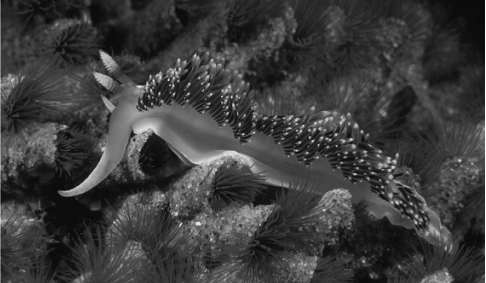The nontaxonomic term sea slug encompasses a wide variety of marine gastropods. One feature they share as adults is the lack of a shell. One might think, therefore, that they represent defenceless morsels for predators. In fact, sea slugs have multiple defences. Some sea slugs prey on sponges and concentrate sponge toxins in their tissues. Others feed on cnidarians, digesting everything except the nematocysts, which they then transfer to their own skins. Whereas the most brightly coloured sea slugs are often highly toxic, others are nontoxic and mimic the colouration of the toxic species. Their colours are mostly derived from pigments in their prey. There are also sea slugs that use their colouration to blend into their environments.
This nudibranch, a type of sea slug, has many reddish cerata on its dorsal surface, as well as two white-tipped rhinophores located on the head. 
-Which structure do sea slugs use to feed on their prey?
Definitions:
Q20: Previously recognised similarities that seemed to connect
Q25: A student encounters an animal embryo at
Q28: Regardless of where in the world a
Q39: The water vascular system of echinoderms _.<br>A)
Q44: Which of the following statements best summarises
Q49: Which of these activities is part of
Q61: Suppose a flower had normal expression of
Q63: Which of these events, based on plant
Q71: In plants, which of the following are
Q72: Which of the following sex and generation